HINDUISM

What is Hinduism?
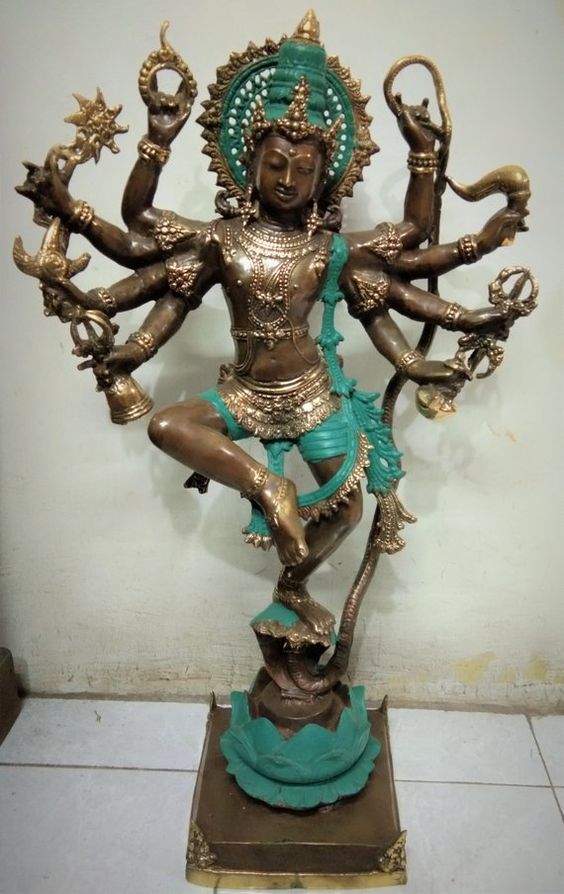
Hinduism is an Indian religion and dharma, or way of life.
It includes a range of philosophies, and is linked by shared concepts, recognisable rituals, cosmology, pilgrimage to sacred sites and shared textual resources that discuss theology, philosophy, mythology, Yoga, and temple building, among other topics.
Hinduism prescribes the eternal duties, such as honesty, refraining from injuring living beings (ahimsa), patience, forbearance, self-restraint, and compassion, among others. Prominent themes in Hindu beliefs include the proper goals or aims of human life : namely, Dharma (ethics/duties), Artha (prosperity/work), Kama (desires/passions) and Moksha (liberation/freedom from the cycle of death and rebirth/salvation). In addition , two popular philosophies are Karma (action, intent and consequences) and Saṃsāra (cycle of death and rebirth). Hinduism is a religion that strongly believes in rebirths where a soul goes from experiencing all forms of life. Hindus are of the opinion that your current actions (Karma) decide the course of your future birth.
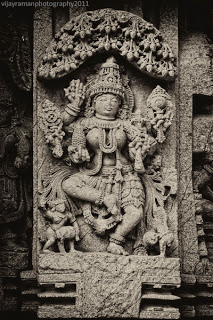
Though it is a widely accepted idea that there are 33 million gods and goddesses in Hinduism currently, the four largest denominations of Hinduism are Vaishnavism, Shaivism, Shaktism and Smartism with lord Shiva, Shakti, Brahma, Vishnu and incarnations of Vishnu like Krishna and Rama are the most important/popular gods and deities in Hinduism.
Hindu practices include rituals such as puja (worship) and recitations, japa (meditative repetition of a mantra or a divine name)., dhyana (meditation), family-oriented rites of passage, annual festivals, and occasional pilgrimages. Along with the practice of various Yogas, some Hindus leave their social world and material possessions and engage in lifelong Sannyasa (monasticism) in order to achieve Moksha. Hindus strongly believe in and encourage practicing vegetarianism as part of maintaining a healthy balance between mind, body and the soul.
This religion gives importance to balance in everything. It worships both the feminine energy of the cosmos (Shakti/Goddess) and its masculine counterpart (Shive/God). Hindus believe in the concept of both energies together as a single embodiment and balance called “Ardhanarishvara” .
![]() What is Hinduism Credit : Cogito
What is Hinduism Credit : Cogito
Hinduism and Dance
Dance is integrant part of Hinduism
The Vedas integrate rituals with performance arts, such as a dramatic play, where not only praises to gods were recited or sung, but the dialogues were part of a dramatic representation and discussion of spiritual themes
The classic text of dance and performance arts that has survived is the Hindu text NATYASHASTRA, attributed to sage Bharata. He credits the art his text systematically presents to times before him, ultimately to Brahma who created Natya-veda by taking the word from the Rigveda, melody from the Samaveda, mime from the Yajurveda, and emotion from the Atharvaveda.
A performance is considered accomplished if it manages to evoke a rasa (emotion) among the audience by invoking a particular bhava(gesture or facial expression).
The criteria for being considered as classical dance is the style’s adherence to the guidelines laid down in Natyashastra,
The eight classical dances of India have roots in Hindu arts and religious practices
A great number of sacred folk dances exist . See below the example of a number of them around Mysuru
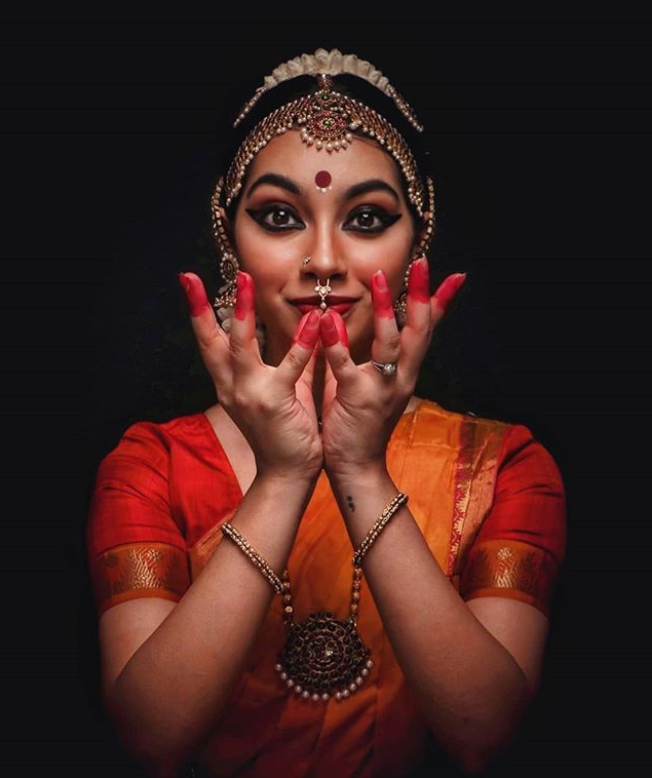
Bharatanatyam
Dating back to 1000 BC, barathanatyam is a classical dance from the South Indian state of Tamil Nadu, practiced predominantly in modern times by women. The dance is usually accompanied by classical Carnatic music. It originated in the Hindu temples of Tamil Nadu and neighboring regions. Traditionally, Bharatanatyam has been a solo dance that was performed exclusively by women and expressed Hindu religious themes and spiritual ideas, particularly of Shaivism, but also of Vaishnavism and Shaktism.
Bharatanatyam and other classical dances in India were ridiculed and suppressed during the colonial British Raj era. In the post-colonial period, it has grown to become the most popular classical Indian dance style in India and abroad.
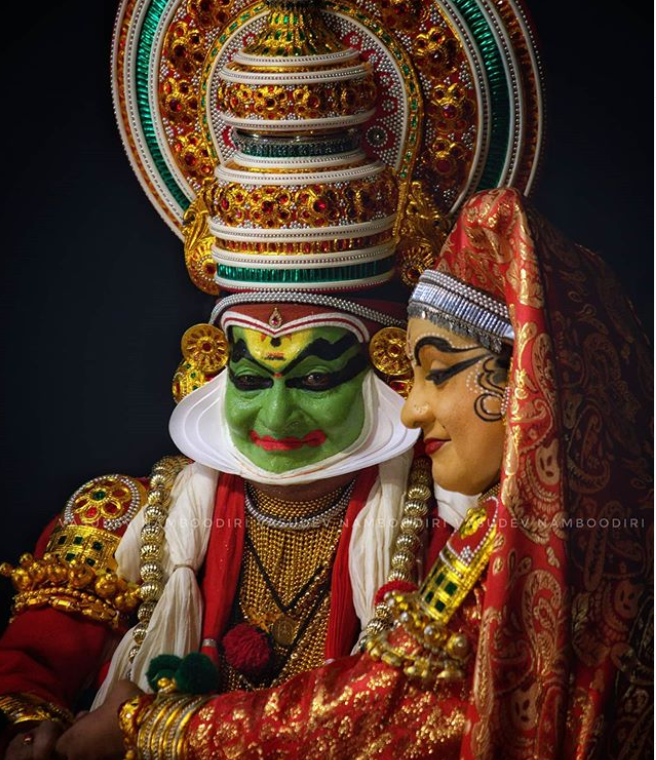
Kathakali
(katha, “story”; kali, “performance”) is a highly stylized classical dance-drama form which originated from Kerala in the 17th century This classical dance form is another “story play” genre of art, but one distinguished by its elaborately colorful make-up, costumes and face masks wearing actor-dancers, who have traditionally been all males.Kathakali primarily developed as a Hindu performance art, performing plays and mythical legends related to Hinduism. While its origin are more recent, its roots are in temple and folk arts such as Kutiyattam and religious drama traceable to at least the 1st millennium CE.[A Kathakali performance incorporates movements from the ancient martial arts and athletic traditions of south India. While linked to the temple dancing traditions such as Krishnanattam, Kutiyattam and others, Kathakali is different from these because unlike the older arts where the dancer-actor also had to be the vocal artist, Kathakali separated these roles allowing the dancer-actor to excel in and focus on choreography while the vocal artists focused on delivering their lines
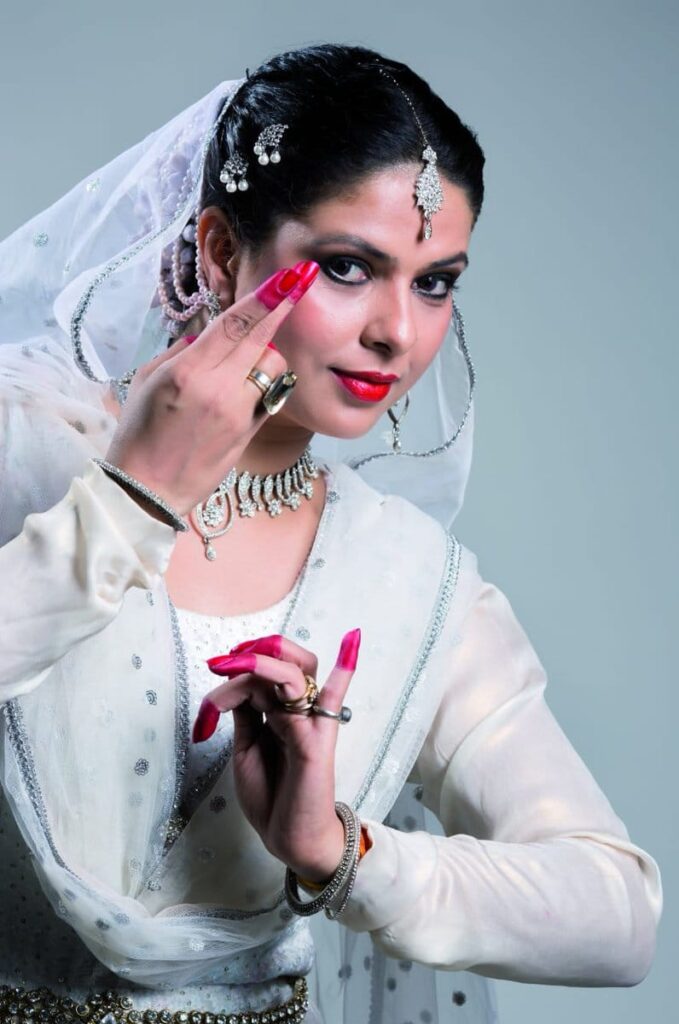
Kathak
Kathak is traditionally attributed to the traveling bards of ancient northern India, known as Kathakars or storytellers. Kathak evolved by incorporating childhood and amorous stories of Hindu god Krishna, as well as independently in the courts of north Indian kingdoms It transitioned, adapted and integrated the tastes and Persian arts influence in the Mughal courts of the 16th and 17th century
Kathak is found in three distinct forms, named after the cities where the Kathak dance tradition evolved – Jaipur, Benares and Lucknow. Stylistically, the Kathak dance form emphasizes rhythmic foot movements, adorned with small bells (Ghungroo), the movement harmonized to the music, the legs and torso are generally straight, and the story is told through a developed vocabulary based on the gestures of arms and upper body movement, facial expressions, stage movements, bends and turns.
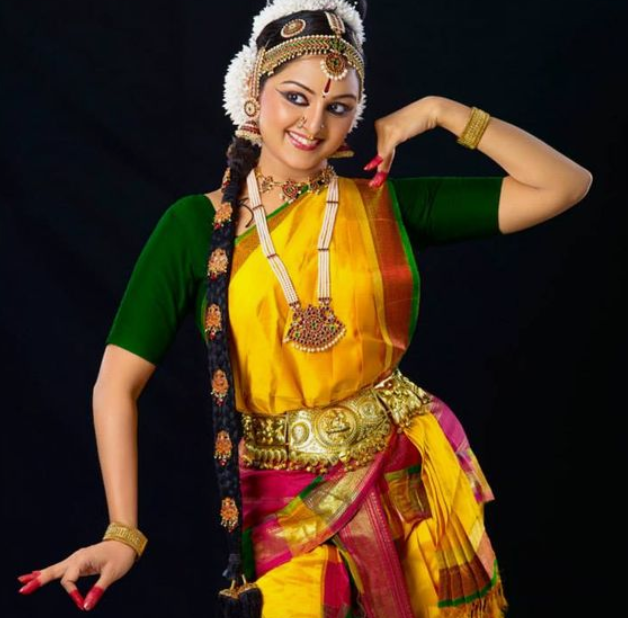
Kuchipudi
It originated in a village of Krishna district in modern era Indian state of Andhra Pradesh. It has roots in antiquity and developed as a religious art linked to traveling bards, temples and spiritual beliefs. In its history, the Kuchipudi dancers were all males, typically Brahmins, who would play the roles of men and women in the story after dressing appropriately. Kuchipudi largely developed as a Hindu god Krishna-oriented Vaishnavism tradition, and it is most closely related to Bhagavata Mela performance art found in Tamil Nadu which itself has originated from Andhra Pradesh. The Kuchipudi performance includes pure dance (nritta), and expressive part of the performance (nritya), where rhythmic gestures as a sign language mime the play Vocalists and musicians accompany the artist, and the tala and raga set to (Carnatic music). In modern productions Kuchipudi dancers include men and women.
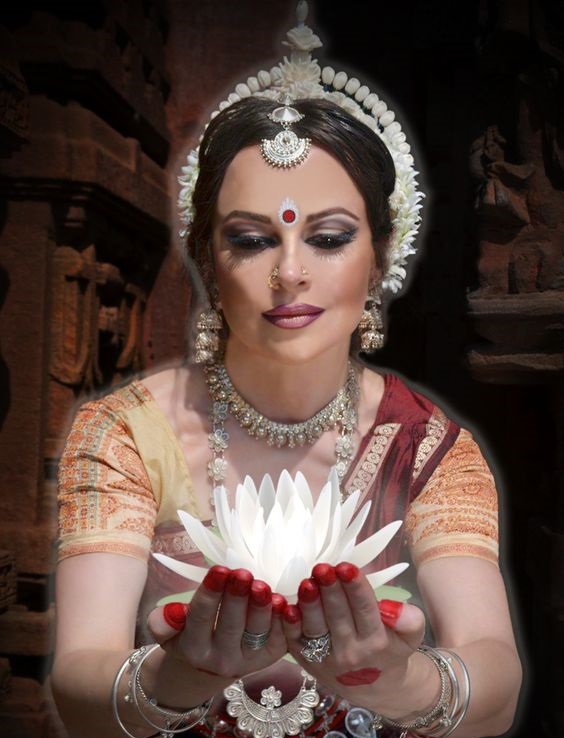
Odissi
It originated in the Hindu temples of Odisha – an eastern coastal state of India. Odissi, in its history, was performed predominantly by women, and expressed religious stories and spiritual ideas, particularly of Vaishnavism (Vishnu as Jagannath), but also of other traditions such as those related to Hindu gods Shiva and Surya, as well as Hindu goddesses (Shaktism Odissi is traditionally a dance-drama genre of performance art, where the artist(s) and musicians play out a mythical story, a spiritual message or devotional poem from the Hindu texts, using symbolic costumes, body movement, abhinaya (expressions) and mudras (gestures and sign language) set out in ancient Sanskrit literature.
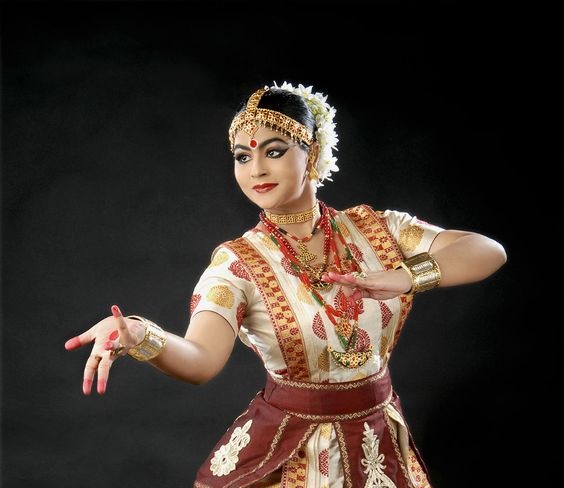
Sattriya
Sattriya is a classical dance-drama performance art with origins in the Krishna-centered Vaishnavism monasteries of Assam, and attributed to the 15th century Bhakti movement scholar and saint named Srimanta Sankardev. One-act plays of Sattriya are called Ankiya Nat, which combine the aesthetic and the religious through a ballad, dance and drama. The plays are usually performed in the dance community halls (namghar) of monastery temples (sattras). The themes played relate to Krishna and Radha, sometimes other Vishnu avatars such as Rama and Sita
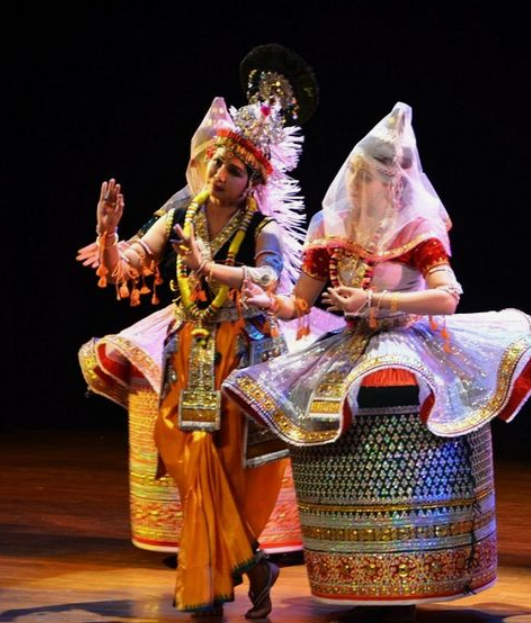
Manipuri
Manipuri, also known as Jagoi, is named after the region of its origin – Manipur, a state in northeastern India bordering with Myanmar (Burma). It is particularly known for its Hindu Vaishnavism themes, and performances of love-inspired dance drama of Radha-Krishna called Rass Lila. However, the dance is also performed to themes related to Shaivism, Shaktism and regional deities such as Umang Lai during Lai Haraoba. The Manipuri dance is a team performance, with its own unique costumes notably the Kumil (a barrel shaped, elegantly decorated skirt), aesthetics, conventions and repertoire. The Manipuri dance drama is, for most part, marked by a performance that is graceful, fluid, sinuous with greater emphasis on hand and upper body gestures.
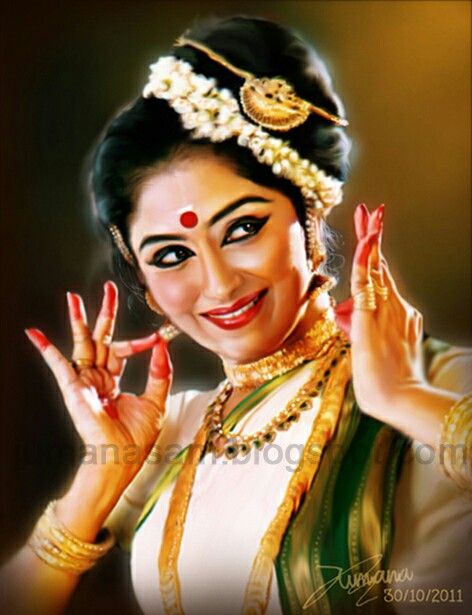
Mohiniyattam
Mohiniyattam developed in the state of Kerala, gets its name from Mohini – the seductress avatar of Vishnu, who in Hindu mythology uses her charms to help the good prevail in a battle between good and evil. Mohiniyattam follows the Lasya style described in Natya Shastra, that is a dance which is delicate, with soft movements and feminine. It is traditionally a solo dance performed by women after extensive training. The repertoire of Mohiniyattam includes pure and expressive dance-drama performance, timed to sopana (slower melody) styled music, with recitation. The songs are typically in Malayalam-Sanskrit hybrid called Manipravala.
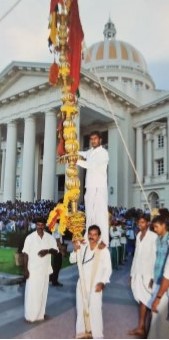
Three dances in Mysuru festival
Nandi Dhwaja, ritualistic dance dedicated to God Shiva
The „ Nandikambha “ or kolu “ is the pole made of special bamboo weighing 120kg!
Tossing and catching of the pole marks beginning of the performance eyes always focused on the pole tip
The tempo of the music is raised with time. End of performance marked by vigorous pole shake
See presentation See video by Malleshaiah
Beesu Kamsale, folk dance dedicated to God Mahadeshwara
High levelof physical strength, rhythmic accuracy and sense of timing required. Mainly performed by men-folk
See presentation See video by Mr Ravi and team
Pooja Kunitha, folk dance dedicated to Goddess Shakti
The pooje “ is a square shaped bamboo frame with an idol of the goddess embedded in the center
The „poojari“ (male priest) perfoms this art during religious festivals
For more details see our online seminar "Sacred Folk Dances around Mysuru" October 2d 2021
The photos corresponding to the eight classical dances are from Wikipedia : Dance in India
